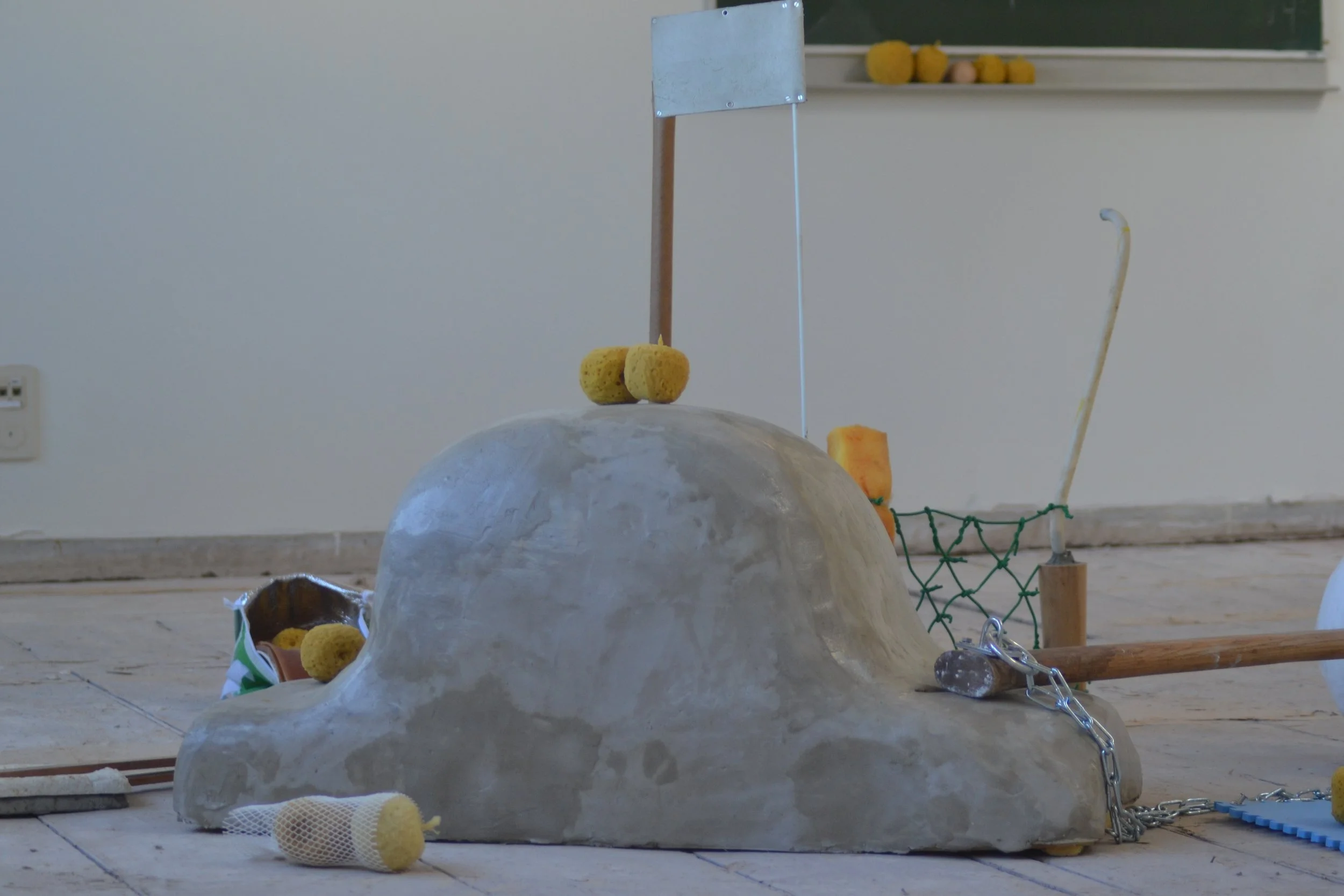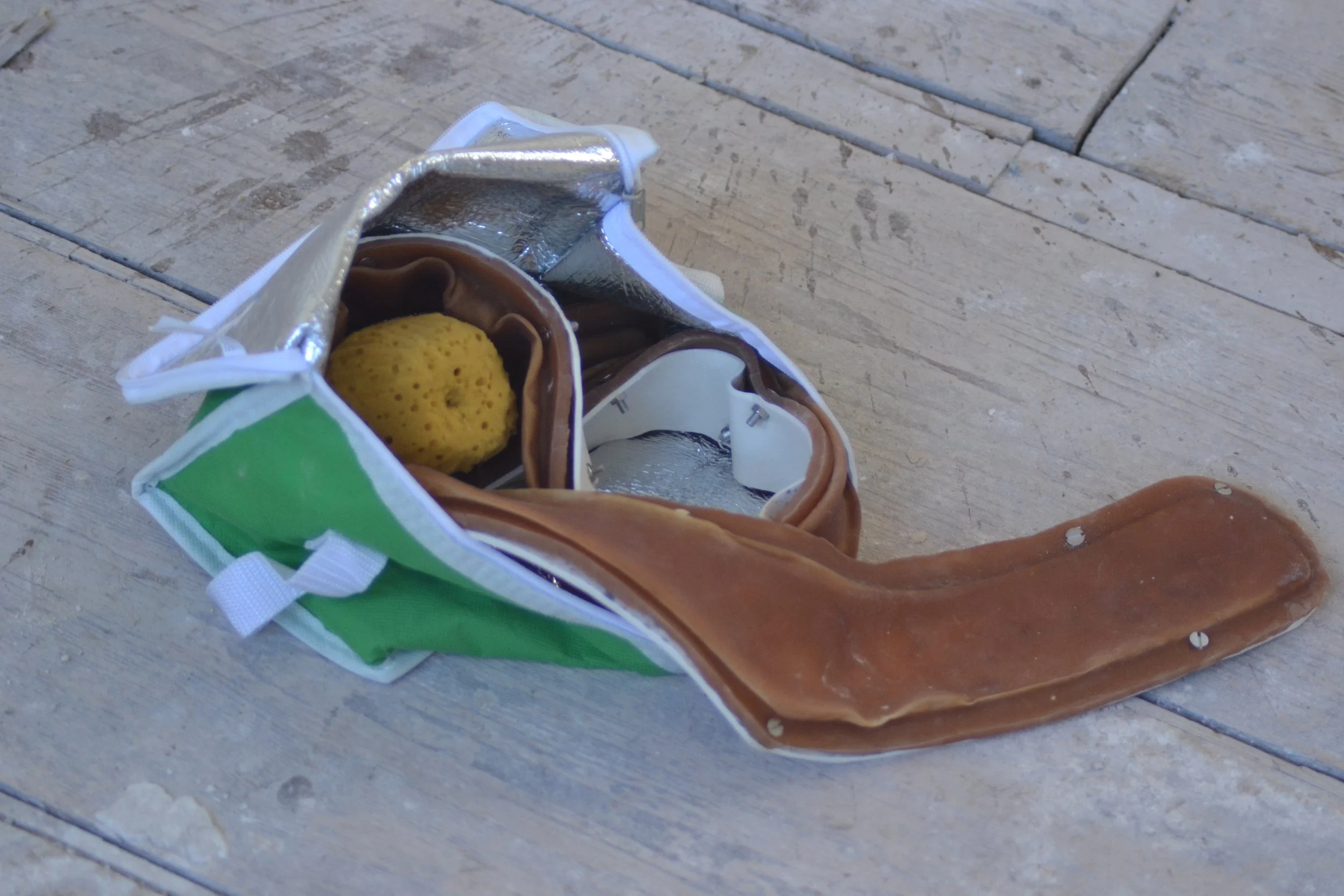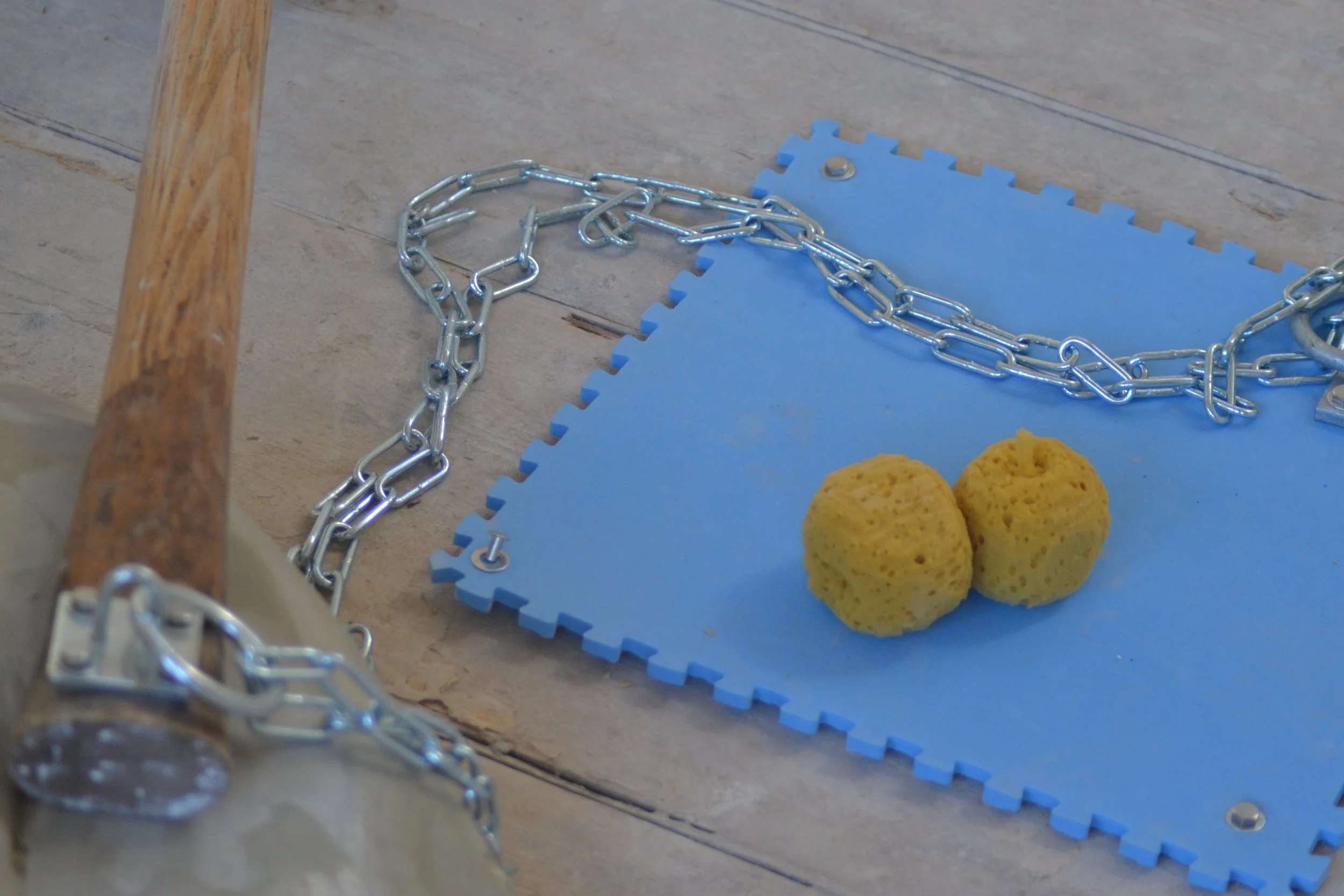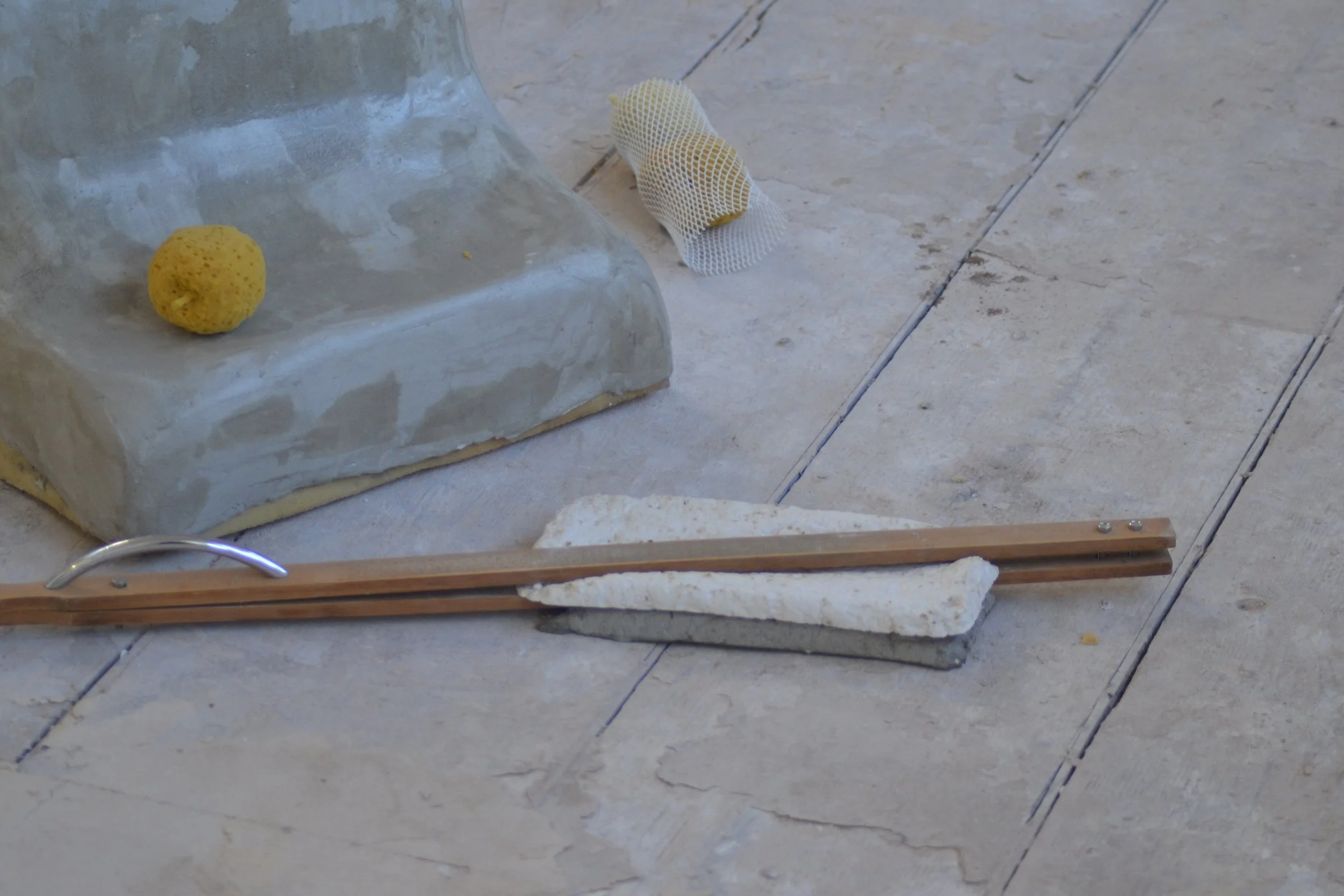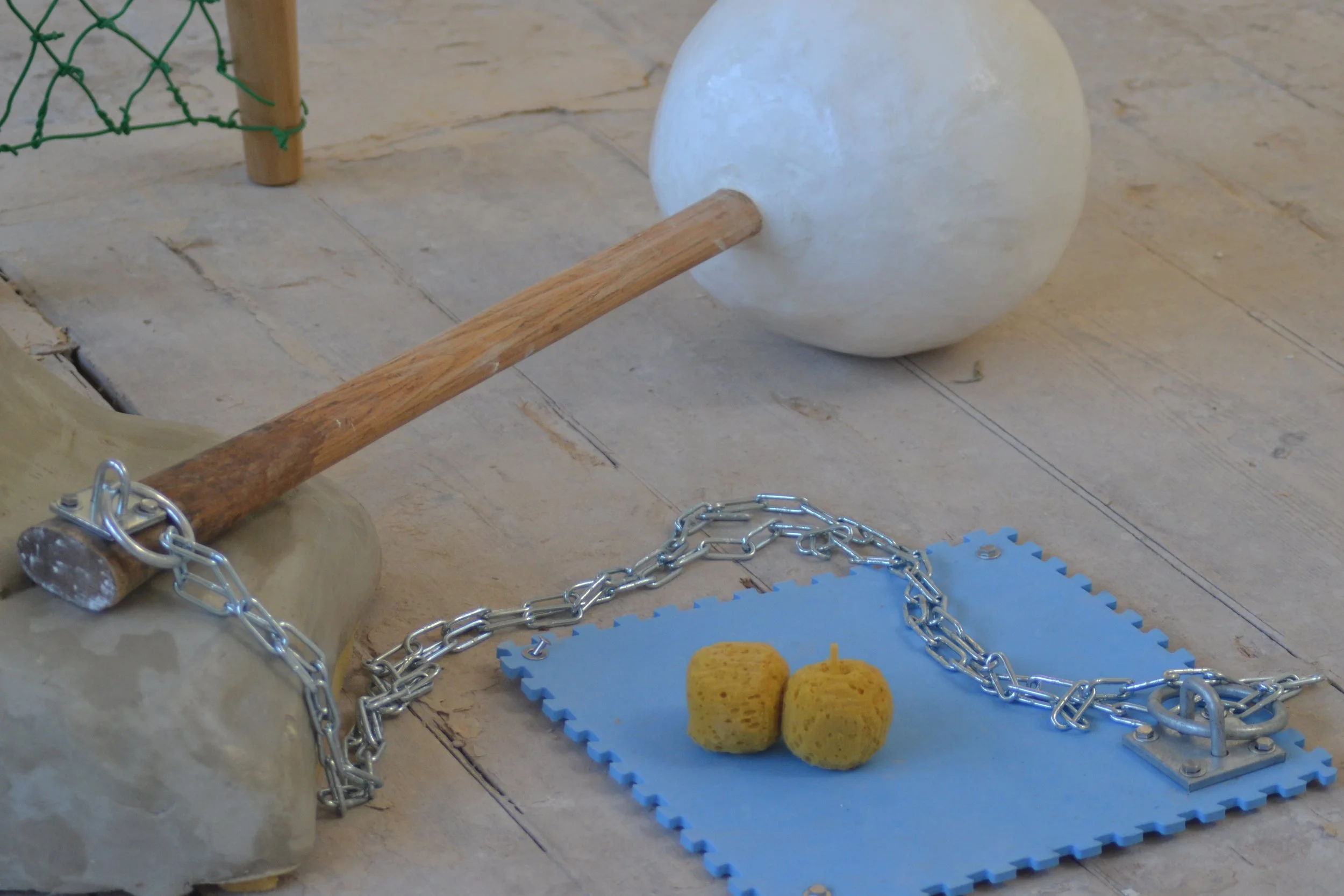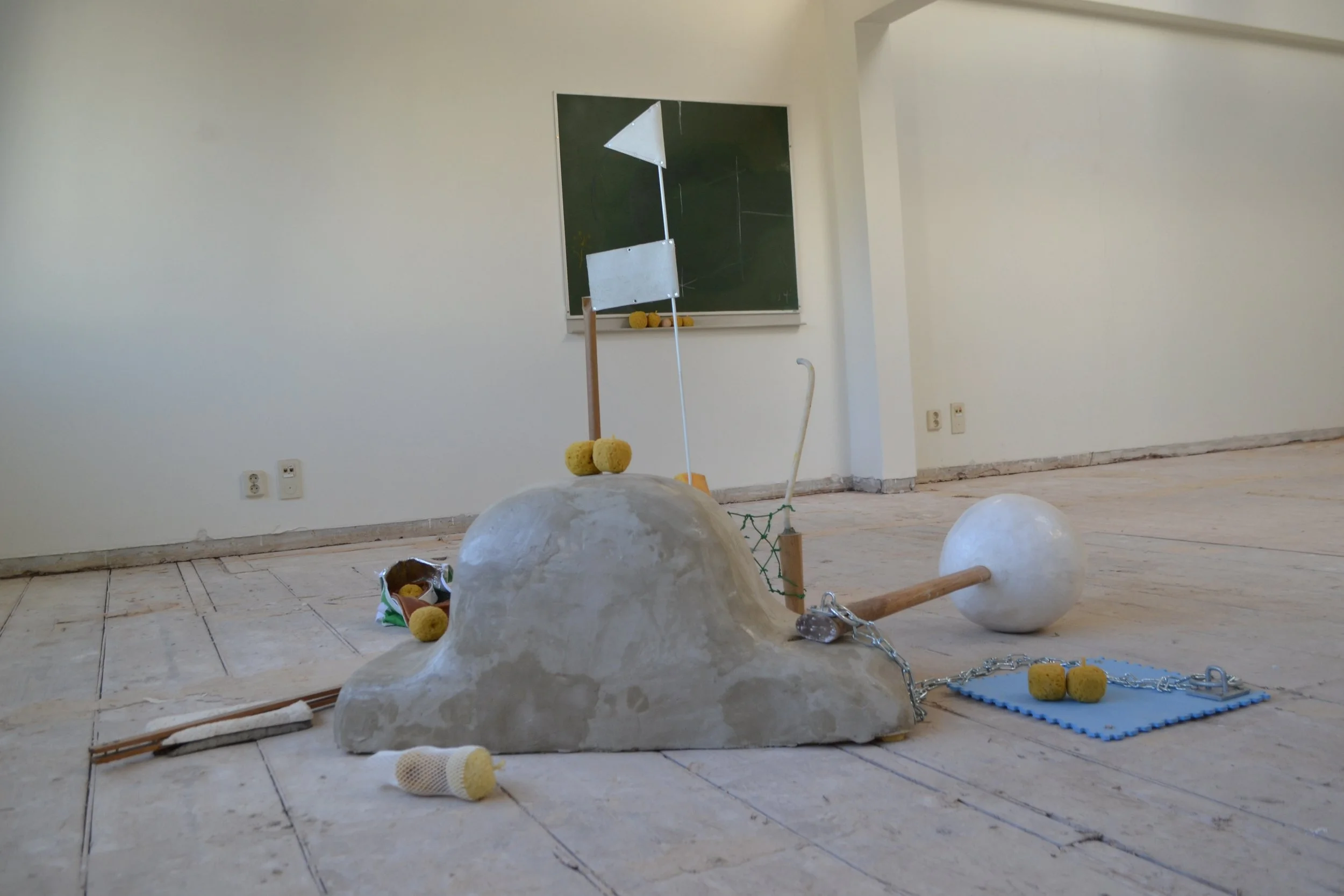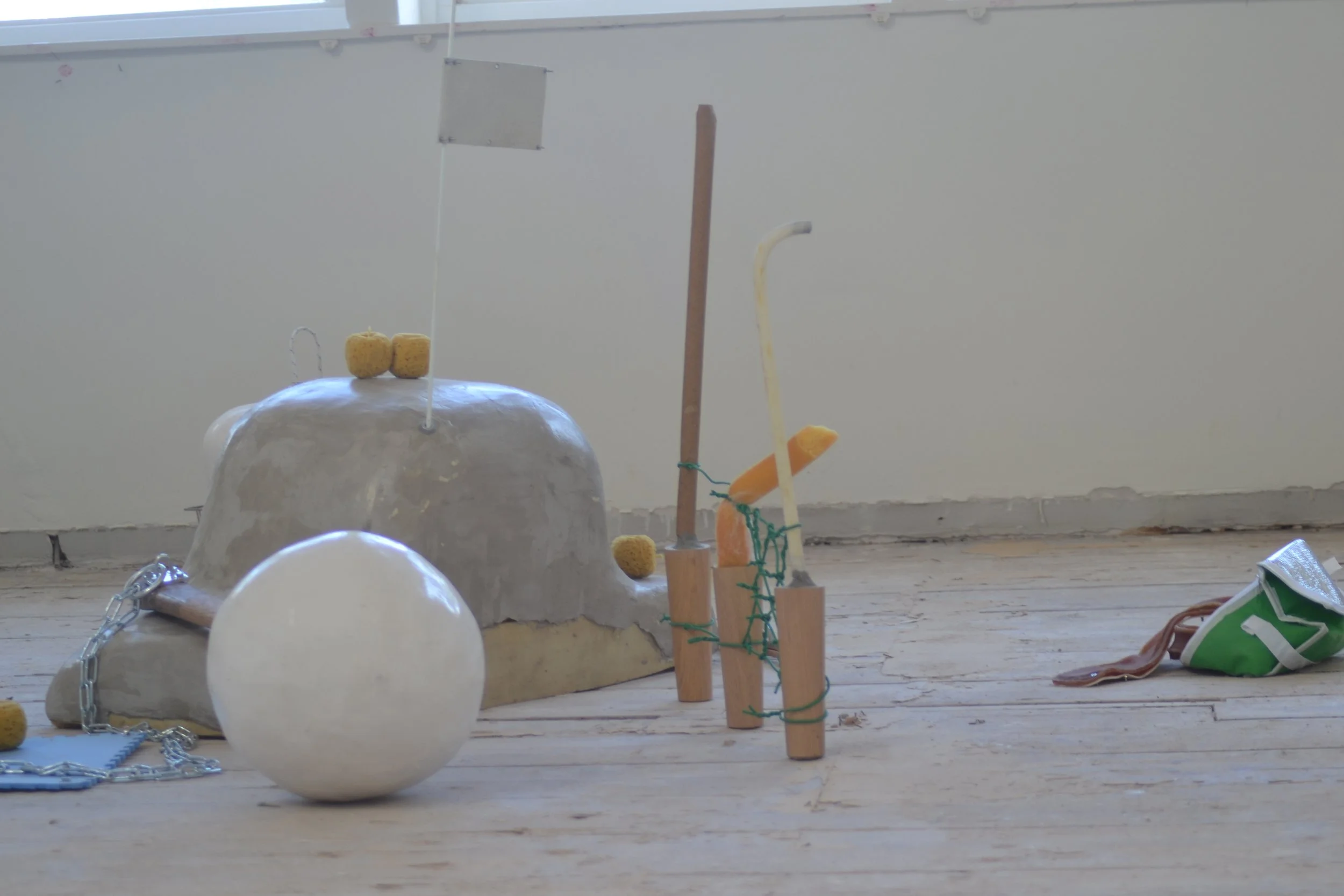Geïntegreerd was a research project that culminated in an installation and two sculptures. The project began as a response to a newspaper article describing a man’s eviction from his makeshift community garden. The article struck me as a beautiful contradiction, where discussions of fault and blame were overshadowed by our discomfort with complex issues like homelessness and immigration. The man had been growing figs, peppers, and other plants beneath a metro bridge, a space also occupied by homeless individuals. The municipality and metro company deemed the area polluted and concluded that the garden made the location “too attractive,” drawing more people to the spot. Thus, they decided the man had to leave. The article presented the story from the perspective of an immigrant whose integration seemed justified by his act of turning a neglected urban space into something usable and beautiful. He was portrayed as a selfless figure who, rather than causing harm, was offering something to the community. However, neither his origins nor his intentions were truly relevant; the issue boiled down to assigning blame to the so-called “pollution” of homelessness, and treating it as the “ugliness” that needed addressing. Allowing the man to stay seemed to expose a double standard. This situation sparked frustration and a deeper reflection. I realized that this land was essentially forgotten ground—if left alone, it would remain barren and overgrown with weeds. The man had brought it to life, creating fertile soil, a safer environment, and a source of food. If pollution was the concern, why not simply provide bins? This scenario raised a fundamental question for me: who has ownership over our basic needs, like food, shelter, community, and play?
